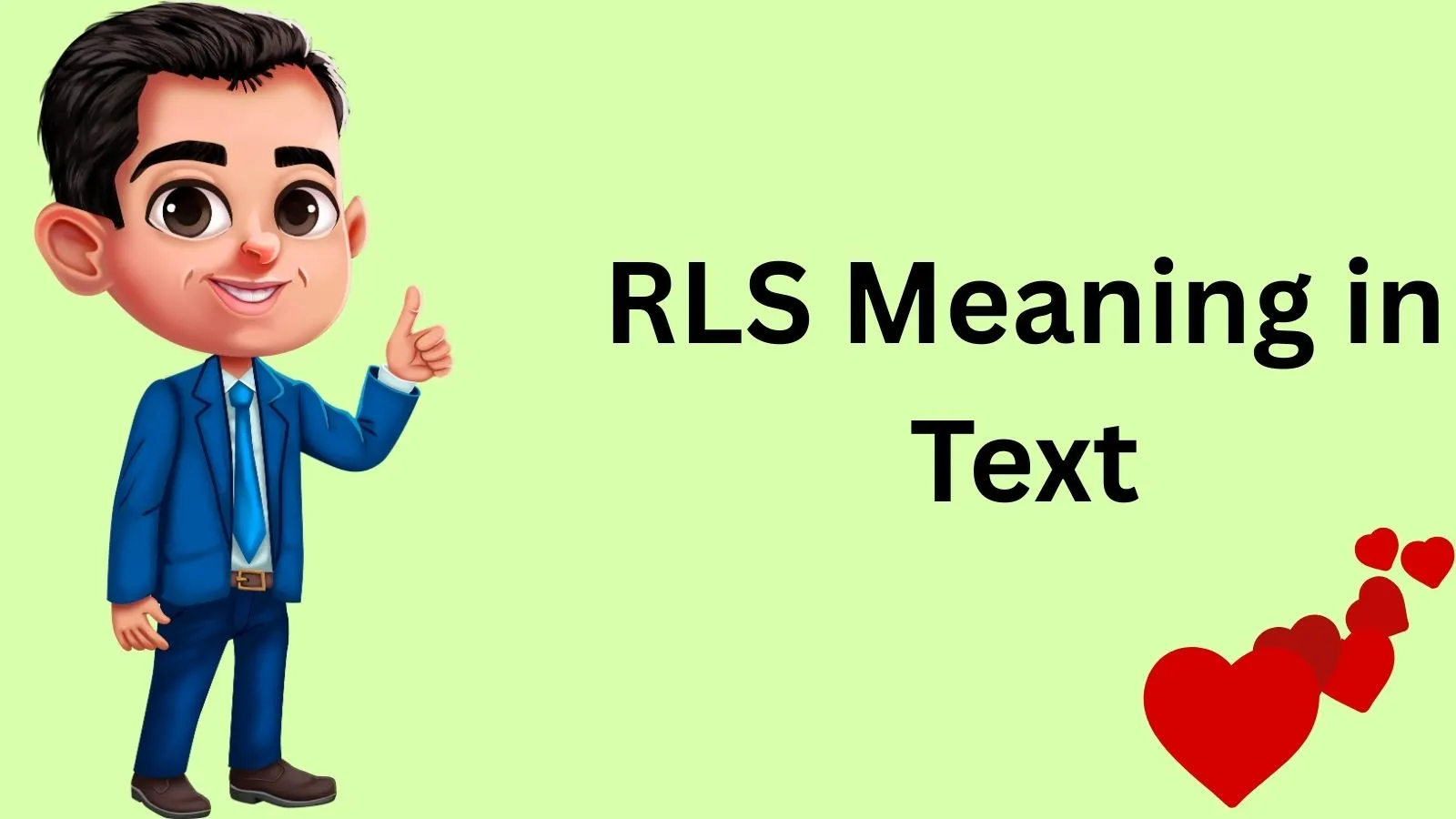In the fast-paced world of texting and online communication, abbreviations and slang terms are everywhere. One such term you might have come across is RLS. But what does it mean? And why is it important to understand?
RLS is a shorthand term often used in casual conversations, social media, and even gaming.
It stands for “Real Life Stuff” or “Restless Leg Syndrome”, depending on the context. Knowing the difference between these meanings can help you avoid awkward misunderstandings and communicate more effectively.
Whether you’re texting a friend, scrolling through Twitter, or chatting in an online game, understanding RLS can make your interactions smoother and more engaging. Let’s dive into the details and explore everything you need to know about this versatile term.
Definition & Meaning
RLS is an acronym that can mean two very different things:
- Real Life Stuff: This is the most common meaning in casual conversations. It refers to everyday responsibilities, tasks, or events that happen offline. For example:
- “Sorry, I can’t join the game tonight. Got too much RLS to deal with.”
- “Let’s catch up later—I’m swamped with RLS right now.”
- Restless Leg Syndrome: In medical or health-related contexts, RLS refers to a condition that causes an uncontrollable urge to move your legs, often due to discomfort.
Real-life examples:
- Friend 1: “Why haven’t you been online lately?”
Friend 2: “Too much RLS—work, family, you name it.” - Doctor: “Your symptoms sound like RLS. Let’s run some tests.”
Understanding the context is key to interpreting RLS correctly.
Background & History
The term RLS as “Real Life Stuff” emerged with the rise of online communication in the early 2000s. As people spent more time chatting, gaming, and socializing online, they needed a quick way to refer to offline responsibilities.
On the other hand, Restless Leg Syndrome has been a recognized medical condition since the 17th century, but the acronym RLS became popular in the 20th century as medical terminology evolved.
Today, RLS is widely used in texting, social media, and gaming communities. Its dual meanings make it a versatile term, but also one that requires careful interpretation.
Usage in Various Contexts
RLS is used differently depending on the situation:
- Texting:
- “Can’t talk now, dealing with RLS. Call you later!”
- Social Media:
- Post: “Taking a break from Twitter. Too much RLS to handle.”
- Gaming:
- Player 1: “Why’d you leave the match?”
Player 2: “RLS called—had to help my mom.”
- Player 1: “Why’d you leave the match?”
- Casual Conversations:
- “I’d love to hang out, but RLS is keeping me busy.”
Common Misconceptions & Clarifications
One common misconception is that RLS always refers to Restless Leg Syndrome. However, in most casual conversations, it means “Real Life Stuff”.
Another misunderstanding is that RLS can be used in formal settings. While it’s fine for texting or social media, it’s not appropriate for professional communication.
Similar Terms & Alternatives
Here are some related terms and their meanings:
| Term | Meaning |
| IRL | In Real Life |
| AFK | Away From Keyboard |
| Adulting | Handling adult responsibilities |
| Responsibilities | Tasks or duties |
How to Respond to This Term
Depending on the context, here’s how you can respond:
- Casual:
- “No worries, take care of your RLS!”
- Funny:
- “RLS? Sounds like a boss battle. Good luck!”
- Professional:
- “Understood. Let me know when you’re available.”
- Privacy-conscious:
- “Got it. No need to explain further.”
Regional or Cultural Differences
RLS is primarily used in English-speaking countries. However, its meaning as “Real Life Stuff” is understood globally in online communities. In non-English-speaking regions, people might use local slang for similar concepts.
Comparison with Similar Terms
| Term | Meaning | Context |
| RLS | Real Life Stuff | Casual, texting |
| IRL | In Real Life | General, online |
| AFK | Away From Keyboard | Gaming, online |
Usage in Online Communities & Dating Apps
On platforms like Tinder or Twitter, RLS is often used to explain why someone isn’t available. For example:
- “Sorry, can’t chat much today. Dealing with RLS.”
Tip: Be polite and understanding when someone mentions RLS. It shows you respect their time and responsibilities.
Hidden or Offensive Meanings
RLS doesn’t have offensive meanings, but it can be misinterpreted if used in the wrong context. Always clarify if there’s any confusion.
Suitability for Professional Communication
RLS is too informal for professional settings. Instead, use phrases like:
- “I’m handling personal matters.”
- “I have some prior commitments.”
FAQs
- What does RLS stand for?
- It can mean “Real Life Stuff” or “Restless Leg Syndrome”.
- Is RLS appropriate for professional emails?
- No, it’s too casual.
- Can RLS be misunderstood?
- Yes, depending on the context.
- Where is RLS commonly used?
- Texting, social media, and gaming.
- Are there alternatives to RLS?
- Yes, like IRL or AFK.
Conclusion
Understanding RLS is essential for navigating modern communication. Whether it’s “Real Life Stuff” or “Restless Leg Syndrome”, context is key. Use this guide to decode the term, respond appropriately, and avoid misunderstandings. Happy texting!


